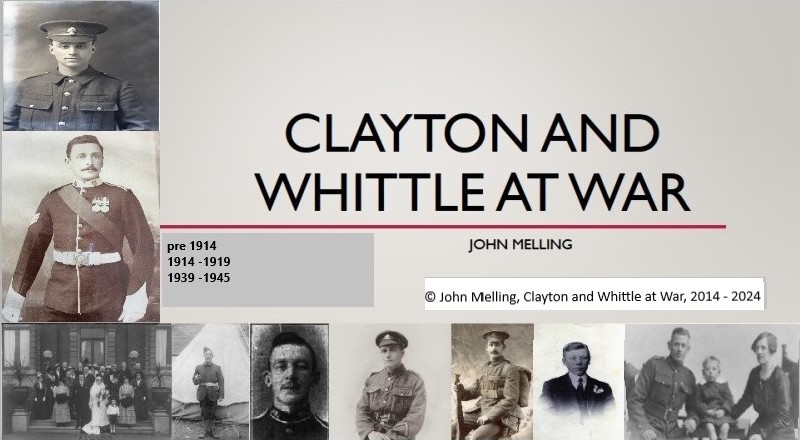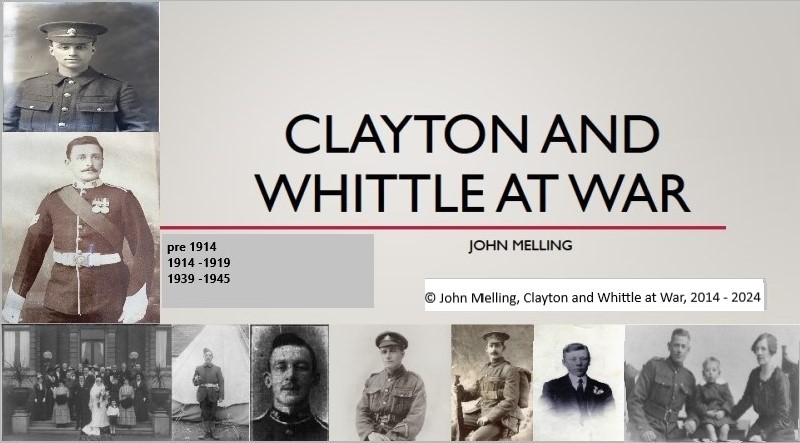
The County Feuds 1315 - 1323 and onward
This is the earliest so far of any form of military action mentioning the local area.
Clayton le Woods and the surrounding area seem to find themselves in the path of hostile feuds between some of the county families and dragging in the wider political conflicts of England, Thomas Plantagenet, Earl of Lancaster, and his cousin King Edward II.
A revolt led by Sir Adam Banaster against the Earl's chief household official, Sir Robert de Holland ended up with a battle lost within an hour at Deepdale, Preston on the edge of Fulwood forest
Clayton le Woods is the scene of an execution of one of the rebels, Roger de Lever who had been caught at Ainsworth after the rebels began to flee.
I wonder where this execution site was.
Mentions of the area?
Whittle-le-Woods. — A parish in Leyland 2 miles N.
of Chorley. In early charters, we find Whithhu, Witul,
Whytehyll (L.P.C.), and in the Assize Rolls (R., vol. xlvii.),
Whithull, Wythull. Whithull in bosco occurs in the
Subsidy Roll of 1332, and Whithull in the Wodes (R.,
vol. 1.) in a Final Concord of 1381. Whitle appears
in 1468 (R., vol. 1.).
The first theme is the Old English ...hwit, white.
During the reign of King Richard II
Richard de Crook is mentioned in various rolls, etc., from 1377 onwards.
In the Patent Rolls of 1387, he is described as the son of
William de Crook of Whithull, and is stated to have served at sea on the King's service in the company of
Richard, Earl of Arundel, admiral of England.
In 1387 he went to Scotland on the king's service in the company of Sir Richard Tempest, knt, one of the wardens of Berwick upon Tweed.
Sir Richard Tempest and Sir Thomas Talbot. chevaliers were appointed wardens of Berwick-on-Tweed from 18 April 1386 to 26 May 1387, receiving £7000 a year, for which they were to keep a garrison of a hundred mounted men at arms, sixty-foot soldiers, 200 mounted archers, and 129-foot archers, all of whom, except 20 men at arms and 20 archers were to be from the South side of the county of Craven and Richmond Sir Richard and Sir Thomas being under the chief command of the chief warden of the East Marches, Lord Neville.
The Patent Rolls 1399 show that Richard de Crook of Whithull, esquire, was retained for life to serve John, Duke of Lancaster, in peace and war, for which he was to receive as his fee 10 marks a year from the issues of the lands of the Duchy of Lancaster.
Henry IV invaded England in June 1399
The Patent Rolls of August 16th, 1403, state that:
Whereas Richard de Crook, esquire, and his sons with certain archers were in the king's company on all the king's journeys and rides after the king landed in England until
the late Battle of Shrewsbury on 21 July 1403, where two of his sons were grievously wounded and he himself lost his horses and harness, and he is a collector of
the
tenth and fifteenth granted to the king by the laity of the county of Lancaster in the last Parliament: the king because he has had no payment of his fee of 20l. yearly for 21/2 years
except for 10 marks, pardons to him 281. 6s. 8d. from the collection of the said tenth and fifteenth, notwithstanding that they are assigned for war.
Wars of the Three Kingdoms (English Civil Wars, 1639 - 1653)
A series of conflicts were fought between 1639 and 1653, in England, Scotland, and Wales
Bishops' Wars - Conflicts in 1639 and 1640 over the governance of the Church of Scotland.
Irish Confederate Wars - Conflict in Ireland from 1641-1653.
Irish Rebellion of 1641 - Rebellion by Irish Catholics.
Cromwellian Conquest of Ireland - Conquest of Ireland led by Oliver Cromwell from 1649 - 1653.
English Civil Wars - A Series of conflicts over the rule of England which included combatants from Scotland and Ireland
First English Civil War - 1642 - 1646.
Second English Civil War - 1648.
Anglo - Scottish War 1649 -1652
While looking for soldiers who came from the local area I managed to find two names mentioned
Robert Brooks
Born
Age
Rank
Possibly a Cheshire Regiment
I have found a record of a 3 May 1652, Quarter Sessions petition of Mary Brooks
A widow of Robert Brooks, a Soldier
Two Children
Robert Brooks joined up with Cromwell's Regiment in the invasion of Scotland
Fought at Dunbar and Inverkeithing
He was Killed in Action sometime before 3 May 1652
He was first in the service of Colonel Richard Standish, Parliamentarian Army
Then served with Colonel William Daniell-
In June 1648, holding the rank of Colonel, William Daniell was the acting governor of Chester Castle
On 4 May 1650, holding the rank of major, William Daniell was ordered to raise a regiment of foot for service in Ireland. His officers included several who had served in the Cheshire forces in 1645-6, including as captains his lieutenant, and ensign. Instead of being posted to Ireland, in July 1650, William Daniell’s regiment joined Cromwell’s army in the invasion of Scotland and fought at Dunbar on 3 Sept.
In 1651 Daniell’s regiment played an important role in Lambert’s victory at Inverkeithing on 20 July. For much of the 1650s, the regiment was stationed at Perth
Jacobite rising of 1745
There is evidence that the local villages of Whittle le Woods, Brindle, and the surrounding area had some involvement with the Jacobite rising of 1745 and subsequently its defeat, led by Charles Edward Stuart, also well known as Bonnie Prince Charlie
Pro and anti-Jacobite sympathies were not far away even in 1747
James Ratcliffe of Whittle-le-Woods



